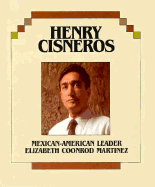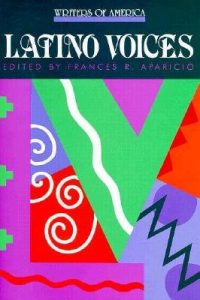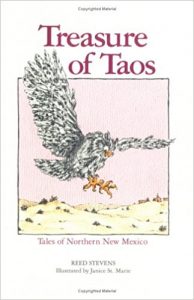 Set in the mountains of Northern New Mexico these five cuentos are an engaging blend of history and fantasy. Warmly accented with fine pencil illustrations, this collection of folktales invites readers of all ages to experience New Mexico’s Hispanic heritage. Winner of the First Place Award for short fiction from the National Press Women’s Association.
Set in the mountains of Northern New Mexico these five cuentos are an engaging blend of history and fantasy. Warmly accented with fine pencil illustrations, this collection of folktales invites readers of all ages to experience New Mexico’s Hispanic heritage. Winner of the First Place Award for short fiction from the National Press Women’s Association.
Latinx in US
The Cat Who Came For Tacos
When Señora Rosa and Señor Tomás find a stray cat sleeping on their stoop, they welcome him into their home. “Mi casa es su casa. My home is your home,” Señora Rosa tells the cat. He introduces himself as Flynn and wanders through their house while they prepare lunch, which has a delicious fishy smell. When lunch is served, Flynn hops up on the table. But before he can dig into the tuna tacos, his new friends point out a few house rules. “In my home, everyone dresses for meals,” says Señora Rosa. So Flynn borrows a doll’s tuxedo and puts it on. When Señor Tomás says, “In my home, people must sit in chairs,” Flynn brings a pillow from the sofa and puts it on the chair so he can reach his plate. Then, after a pleasant lunch, Señor Tomás and Señora Rosa discover that Flynn has some ideas of his own about how people and cats can live happilly together.
The Almost Murder and Other Stories
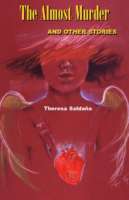
“Pops stormed his way down the hall in a pissed-off march–trouble on the move. A quick glance at his florid, contorted face told me he was smashed. I looked down at meat, spoon, dough–anything to avoid his bleary red eyes. The stench of booze sickened me. So did my father.” In the title story of this gritty collection for teens, a young girl remembers the night her father almost killed her mother. The peace that comes when her father is put in jail is short lived though, because in order to keep him behind bars she will have to testify against him in court. Can she be strong enough to overcome her fear? What if he leaps out of his chair and attacks her too? Can she do what needs to be done in order to keep her mother and grandmother safe? In Theresa Saldana’s first collection of stories for young adults, her characters confront issues relevant to all teens, from friendship to dreams for the future. Many, though, must overcome suffering–whether physical or emotional–that impacts their sense of security and well being. A teenager survives an auto accident that has left her with multiple disfiguring scars. Will she ever be able to really live again? A young high school student prepares to leave the safety of her neighborhood where her friends have accepted her the way she is–overweight. Will her new classmates at Hunter College be able to see who she really is inside her big body? Sure to intrigue young adult readers who will identify with numerous contemporary cultural references–from reality TV shows to computers and the Internet–the engrossing stories in this collection give voice to young Latinas who, like their counterparts everywhere, yearn to be “normal.”
The Moon is La Luna: Silly Rhymes in English And Spanish
This book is full of monos, ratons, and osos. What’s that, you say? You don’t know what a mono is? What about a rio, some pelo, or even an árbol? No? Still no idea? You should read this libro, then. By the time you finish, you’ll be able to recognize and understand more than fifty simple Spanish words. You’ll be saying, “Mas, por favor!” You may even ask your papá to buy you a gato or pato. (But not your papa. Potatoes can’t buy pets.)
Call Me Consuelo
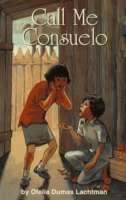
Intrigue and danger weave a web around young Consuelo as she is thrust into a new life in unfamiliar surroundings and a real life mystery that begs to be resolved.
Featherless/Desplumado (Multilingual Edition)
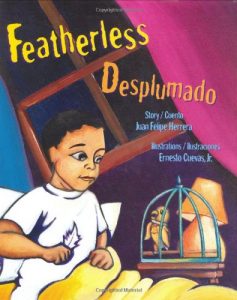 At his new school or on the soccer field, all everyone wants to know is why Tomasito is in a wheelchair. His father gives Tomasito a new pet to make him smile, but this bird is a little bit different. Can Tomasito\’s featherless friend teach him that there\’s more than one way to fly? Will the cheers Tomasito hears on the sidelines ever be for him? Award-winning author and poet Juan Felipe Herrera scores yet again with this sparkling story of friendship and self-empowerment. The brilliant acrylic paintings by Ernesto Cuevas, Jr., burst off the page with sheer joy.
At his new school or on the soccer field, all everyone wants to know is why Tomasito is in a wheelchair. His father gives Tomasito a new pet to make him smile, but this bird is a little bit different. Can Tomasito\’s featherless friend teach him that there\’s more than one way to fly? Will the cheers Tomasito hears on the sidelines ever be for him? Award-winning author and poet Juan Felipe Herrera scores yet again with this sparkling story of friendship and self-empowerment. The brilliant acrylic paintings by Ernesto Cuevas, Jr., burst off the page with sheer joy.
Henry Cisneros
Over Here It’s Different: Carolina’s Story
Relates, in text and photographs, the experiences of an eleven-year-old girl who emigrated from the Dominican Republic at age seven, and describes the two worlds she lives in as an American trying to preserve her heritage.

